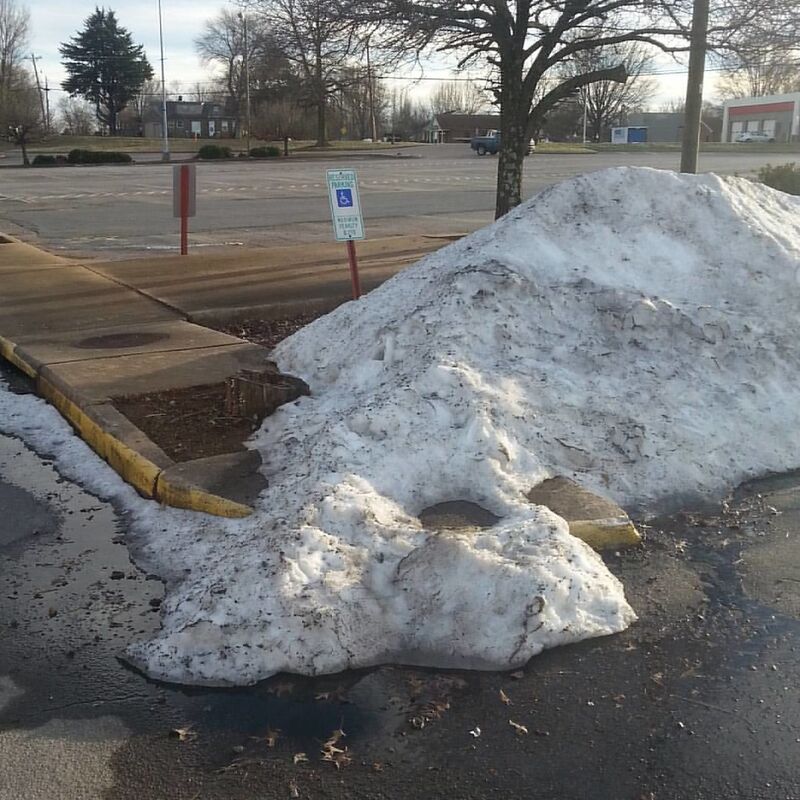
The first snow of the season is always the most anticipated! Children (and adults too) can’t wait to catch the first snowflake and build the first snowman of the season. Snow ice cream is on the menu and snow sleds come out from the garage. And if lucky, school will be cancelled for the day so everyone can enjoy the fun.
What do you think of when you think of winter weather? As adults, we may enjoy that first snow, but we are also faced with the reality of how the harsh weather can interrupt our daily lives. Dangerous roadways, slower traffic, icy sidewalks, delayed travel schedules, childcare issues, getting to work on time (and in one piece).
People with disabilities have even more to consider when the weather is severe. While an icy sidewalk is risky for all, a mobility disability makes getting to one’s car, a bus stop, or the pharmacy much more than an inconvenience. For someone who is blind or has limited vision, it may be difficult to tell an icy patch from a safer patch of ground. A lack of snow removal can mean being held captive in one place without needed supports until the snow is removed. And not just the snow, but the ice that remains afterward. If there is an emergency, someone could be unable to receive assistance if needed because there is an icy bridge blocking the way in and out.
The ADA requires that public accommodations maintain accessible features, including during inclement weather. Accessible parking spaces, access aisles, curb ramps and accessible routes must be clear of obstacles, including snow. A business should ensure that shoveled snow is not dumped into any of the accessible features mentioned above. An accessible parking space or aisle is NEVER the appropriate place to store that inconvenient snow!
A state or local government agency must maintain access to its programs. Clearing ice and snow may be essential to provide access to programs, services, or activities. If a person can’t access the courthouse because snow and ice have not been removed in a timely manner, access to its programs have been denied.
Other issues that may be encountered during severe weather that you may not have thought about:
*During a snowstorm when visibility is limited, or when high levels of snow have been dropped, accessible features may be hidden from view, such as the accessible parking signs.
*Snowplows may inadvertently knock down accessibility signs.
*Independent snow removal contractors may not be aware of the responsibility of the public accommodation to ensure that snow is not placed in accessible parking spaces.
The time to prepare for accessibility is before the storm hits! Hannah Soyer, a freelance writer for World Institute on Disability offers these suggestions in her “Winter Accessibility Woes” blog on how to increase accessibility during difficult weather situations:
- Implement more proactive snow removal policies which do not place the responsibility on good Samaritan neighbors.
- Have plans in place to ensure curb cuts are cleared of snow and ice after streets are plowed.
- Design winter storm response plans with people with disabilities, including the elderly, in mind. Better yet, hire people with multiple different impairments as consultants or project leads on these policies to make sure policies are designed for their needs. In line with the concept of Universal Design, cities will be safe and more accessible for everyone when the needs of those most impacted are brought to the forefront.
- Like winter storm response plans, any disaster/emergency response plans must be designed with disabled people prioritized.
Take advantage of these resources to ensure access for everyone:
ADA Update: A Primer for Small Business | ADA.gov
ADA Update: A Primer for State and Local Governments | ADA.gov
Reaching Out to Customers with Disabilities, Maintaining Accessibility
Expanding Your Market: Maintaining Accessible Features in Retail Establishments (ada.gov)